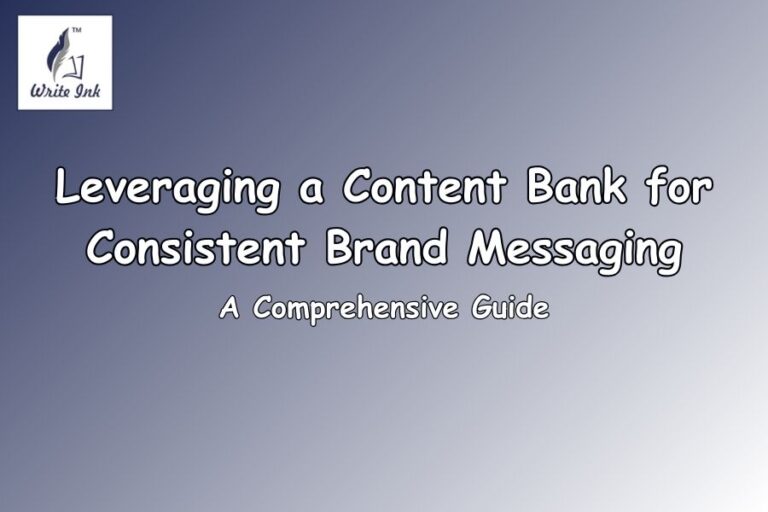Effective Techniques for Copywriting in Advertising
It often happens that some catchphrases of brands or some jingle from a television advertisement grab our attention, and we remember them for a long time. It is because their writers used fascinating words arranged in such combinations so as to enthral their audience. It is this art of writing, which is called copywriting in advertising that we will discuss below.
Definition of Copywriting in Advertising: Copywriting is the art of writing text aimed towards the advertising of a brand, product, service, etc. Copywriting is a content strategy targeted at fascinating the viewers, convincing them to take action, and converting them into customers. It is a skill of using the right words and arranging them into such an order so as to arouse interest. The copy that a copywriter writes is persuasive enough to coax the audience to take action and is used for creating brand awareness.
The format of a copy depends upon the medium through which it will be delivered. A copy is written for mediums like newspaper ads, hoardings, brochures, radio ads, television ads, social media posts and ads, YouTube ads, and others. A good copy in line with the target audience’s preferences is attractive while also being fresh, original, and compelling.
Importance of Effective Copywriting in Advertising: Although copywriting is a part of the marketing realm, it holds a lot of value for your brand. In a way, it establishes your brand’s identity and familiarises the audience with your brand. Hence, effective copywriting in advertising will solidify your brand’s message, image, and unique solutions, keeping you on top of your target audience’s mind.
It is a way of highlighting what makes your company stand out, your unique solutions to the existing problems of your target audience, your product’s benefits, etc. A compelling copy, in the form of a jingle or catchphrase, for instance, can create brand awareness, stir interest in the viewers, make your audience remember your brand, increase conversion rates, and more.
Understanding Your Audience
Target Audience Analysis: The target audience is a particular group of people who would be interested in your brand’s products. Understanding your target audience is an imperative part of Copywriting in advertising. It would be best if you did it so that you can produce an effective copy catering to their needs and preferences. You can do this by looking at the people who are usually interacting with your brand’s website and social media handles, observing your competitors’ audience, and collecting data from sources like social media insights, Google Analytics, web cookies, previous customer databases, demographics, etc.
Buyer Persona Development: Based on your customer data or target audience analysis results, you can formulate a buyer persona or a representation of your target audience and use it to write your copy or to develop other marketing strategies.
Psychology of Persuasion: Copywriting in advertising is persuasive. But to write a compelling copy, you need to understand human psychology, what makes people tick, and then write something that will appeal to the audience. Tips that copywriters use to write persuasively include using compelling headlines that appeal to the emotions of readers, storytelling, customer testimonials, including CTA, and the use of numbers and statistics.
Crafting Compelling Copy
Attention-Grabbing Headlines: Head-turning, jaw-dropping Headlines are an integral part of Copywriting in Advertising. Formulate a catchy headline that could tell about your brand in a few words (5-10 words). You can use your brand name in the headline, and your headline font should stand out.
Engaging Body Copy: The body copy should be crisp, informative and seem to follow the heading. It should include the product’s salient features and unique points, and the language should be clear, original, and trustworthy. When doing Copywriting in Advertising, these are the rules to live by.
Call-to-Action (CTA) Formulation: Your call to action in the ad copy should be simple without involving multiple steps.
Leveraging Persuasive Techniques
Emotional Appeal: To make copywriting in advertising convincing enough, you should appeal to the emotions of the audience, which can be done by using transfixing headlines or the storytelling technique while also being honest and not making false promises. For example, a headline like “Make learning fun with our activity and facts-oriented notebooks and registers”.
Social Proof and Testimonials: Citing customers who have used and benefited from your product can support your claims about it, helping build trust.
Benefits vs. Features: When considering the benefits and features of your product to include in the copy, prefer the former because while it is easy for the audience to figure out its features, they are more interested in knowing its benefits.
Tailoring Copy for Different Platforms
Copywriting for Social Media Ads: Making ad copies for different mediums isn’t a one-size-fits-all approach. Users differently browse each platform so you need to tailor your content accordingly, or else it won’t be read. You need to understand the needs of different platforms. Copywriting in Advertising also includes Social media ads that are built with terse, specific, and attention-grabbing content. During the fast scrolling of the viewers, your ad should be able to make them pause (while also delivering the necessary information) and take action. You can use puns, alliteration, slogan, etc., for the headline paired with a nice visual, hashtags, and contact information. Remain updated on algorithm changes and adjust your ad copy to reach the maximum number of people.
Copywriting for Print Ads: While doing Copywriting in Advertising, one also has to cater to Print ads that are mainly in the form of a poster in newspapers or brochures where you need an appropriate heading, which gives away something essential to maintain intrigue paired with suitable sub-headings (in brochures especially). Include your brand’s slogan and use photos of your product to make it appealing. Give the required details about your brand, product, and message in the body using a bulleted list. Keep the language simple yet handsome. Contact information is very imperative in print ads like phone numbers, emails, addresses, and websites (use a short and memorable URL).
Copywriting for Digital Display Ads: Another copywriting in advertising is for digital display ads, made up of text, images, videos, or gifs and displayed on websites and apps. In display advertising, you can use square, landscape, or skyscraper format or banners incorporating product images, text, and call-to-action (URLs that lead the viewer to the product website). These ads appear on web pages, alongside articles, videos, etc. or in apps where visitors can view them. Display ad campaigns can be run using tools such as Facebook advertising or Google ads, and through Google Display Network, around two million websites can be targeted.
Testing and Optimisation
A/B Testing Methods: After finishing copywriting, you can test your copy using by A/B testing method, where two versions of your copy are compared to check which one is more successful. The various elements of a copy (heading, sub-head, body, image, CTA) could be tested. The two versions are broadcast to two segments of visitors at the same time to see which version drives better results.
Analysing Metrics and Performance Data: Copywriting in Advertising does not end with creative writing. You also have to actively track its performance. You can test your copy by analysing insights and data, telling you how your ads are performing. Feedback from peers and clients, and survey polls are helpful too.
Iterative Improvement Strategies: You need to optimise your ad copy from time to time based on its performance data. You should be flexible and able to try new things in order to achieve desired results.
Partin Wisdom
In this article, we discussed the definition, significance, features, and nuances of copywriting in advertising. We hope we provided you with useful insights.
Image Reference: Freepik
Disclaimer: All trademarks, logos, and brand names are the property of their respective owners. All company, product, and service names used in this website are for identification purposes only. Use of these names, trademarks, and brands does not imply endorsement.








